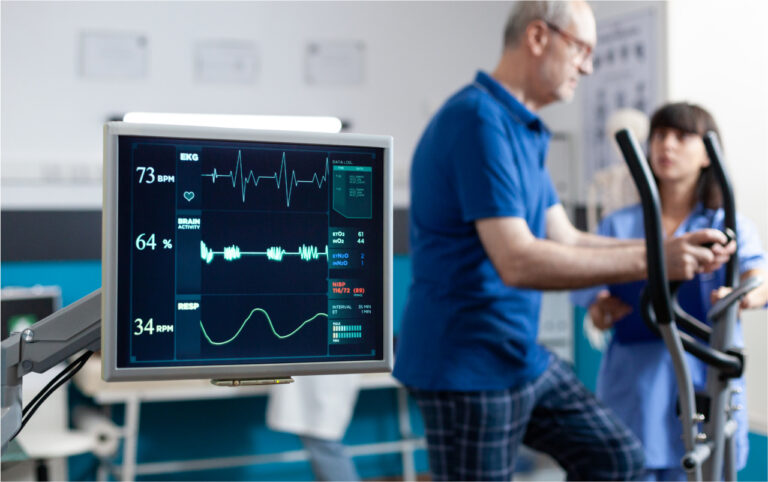Handgrip strengh
The handshake strength test is a simple, quick and reliable measurement that provides information on overall muscle strength. Grip strength is considered a good indicator of health, fitness and muscular performance. This test is performed with a handheld dynamometer, and the results can be compared with population standards.


Gait analysis
Gait analysis on the dynamography platform uses advanced sensor technology to accurately assess gait mechanics. The platform records a number of parameters, such as stride length, gait speed, and foot pressure distribution during walking, which allows it to identify abnormal movement patterns, asymmetries, or potential areas of injury risk.


Balance analysis
Balance analysis is carried out using a platform that measures the ability to maintain body stability under various conditions. This test is crucial in assessing the risk of falls, especially in the elderly.



sEMG
Surface electromyography (sEMG) allows assessment of muscle activity by recording electrical signals generated during muscle contraction. EMG is used to analyze muscle function, muscle fatigue and in optimizing sports training.


Ergospirometry
Ergospirometry is an advanced physical fitness test that combines an exercise test (usually on a stationary bike or treadmill) with breathing analysis. This test provides information on maximal oxygen consumption (VO2max), heart rate, muscle performance and gas exchange efficiency. Ergospirometry is particularly useful in assessing the fitness of people actively engaged in sports, in cardiac rehabilitation and in planning individual training programs.
IPAQ
Physical activity questionnaire - so far in the Bialystok PLUS study we have used the International Physical Activity Questionnaire long version of the IPAQ. It helps determine what a respondent's standard level of physical activity looks like on a weekly basis and identify those with sedentary lifestyles or low physical activity.
Examinations
The purpose of the study is to assess the health status of the residents of Our City and to examine the impact of various factors on the development of chronic diseases.

